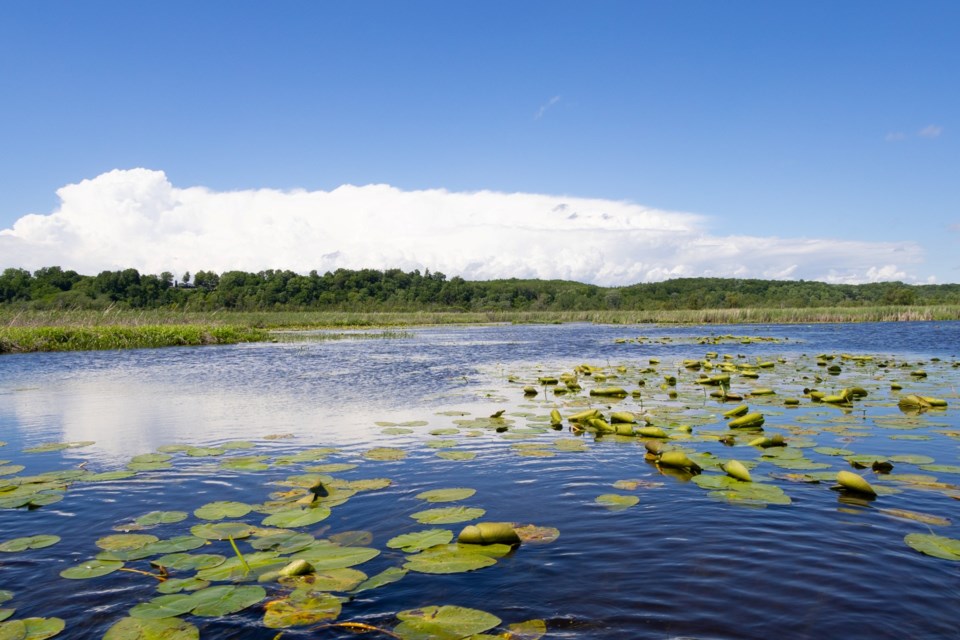Feb. 2 is usually highlighted by Groundhog Day when furry rodents forecast if we will have an early spring. Since 1971, this day also serves as World Wetlands Day. Our wetlands perform many essential functions that many of us overlook.
Wetlands provide safety benefits with an efficiency and resiliency often greater than many human-made infrastructure, including protecting our homes, businesses and roads from heavy rains and flooding. They also help regulate water runoff throughout the year, storing water during high precipitation periods and slowly releasing it during drought and dry periods.
Wetlands clean water by filtering out sediments, excess nutrients, pesticides, fertilizers and heavy metals. This is important in wetlands connected or close to watercourses, since we use this water for drinking, fishing and agriculture. Wetlands also supply fantastic recreational opportunities for communities like nature appreciation, birdwatching, paddling, fishing and hunting.
Extreme rainfall events are becoming more frequent, and conditions would be much worse if we didn’t have wetlands acting as a huge sponge during floods, buffering our community infrastructure and working lands.
This was reinforced by a new research study involving the University of British Columbia and the Nature Conservancy of Canada Flood prevention benefits provided by Canadian natural ecosystems - ScienceDirect.
This collaboration examined the benefits that Canada’s natural ecosystems provide for flood prevention. It identified the natural ecosystems across the country that capture and retain the highest amounts of runoff and are simultaneously located upstream of urban and agricultural areas. The most important of these ecosystems help prevent flooding in 54 per cent of urban areas and 74 per cent of agricultural lands within floodplains.
Beyond the natural safety benefits to people and communities, wetlands are crucial nesting and feeding grounds for many species of birds. They are nursery habitat for fish and support a wide diversity of insects that are the foundation of the food chain. Close to half of Canada’s wildlife species, and a third of species at risk, rely on wetlands for at least part of their lifecycle.
Here in Ontario, NCC has conserved critical wetland habitats across the province. Many NCC wetland sites are critical habitat for vast numbers of ducks and birds who depend on these areas to breed or stopover during migration. Thousands of hectares of coastal wetlands on Lake Erie near Turkey Point are now protected across a wide network of conservation lands, providing an important stopover point for thousands of migrating birds. In Eastern Ontario, recently protected wetlands support breeding grounds for great blue herons, while on the north shore of Lake Superior, forested wetlands safeguarded by NCC are home to birds like American white pelican and peregrine falcon.
Canada is home to an astonishing 25 per cent of the world’s wetlands yet these diverse and vital ecosystems are underappreciated and under-protected. The country has lost an estimated 70 per cent of its ponds, bogs, swamps, salt marshes, estuaries and other wetlands in southern areas where most people live. In some communities it is high as 95 per cent. This is due to land conversion, urbanization; commercial and industrial development; roads; land use practices, sewage and illegal dumping.
One of the greatest threats to Ontario’s wetlands is phragmites, an invasive perennial aquatic reed. Found mostly in wetlands and along roadways and ditches, this towering plant takes over moist areas, choking out all other life as it forms dense stands of reeds that can number up to 200 stems per square metre. It outcompetes native wetland plants, leaving wildlife like frogs and turtles without vital habitat, and blocking shoreline views and access.
NCC and the Invasive Species Centre are working together to lead the Ontario Phragmites Action program, a collaborative effort to support invasive phragmites management in priority areas across the province. This work will protect critical infrastructure for communities, restore sensitive habitats for species, improve biodiversity, and ensure a healthier environment for people across Ontario to enjoy.
Globally, 64 per cent of the world’s wetlands have already been lost, a rate three times greater than the loss of forests. Although our wetlands are mainly under ice this time of year — they are nature’s multi-taskers and provide us with safer communities. Visit natureconservancy.ca to learn more on how the Nature Conservancy of Canada is preserving and restoring some of our most critical ecosystems for both people and wildlife.
Eric Cleland is the director of conservation in Ontario with the Nature Conservancy of Canada
